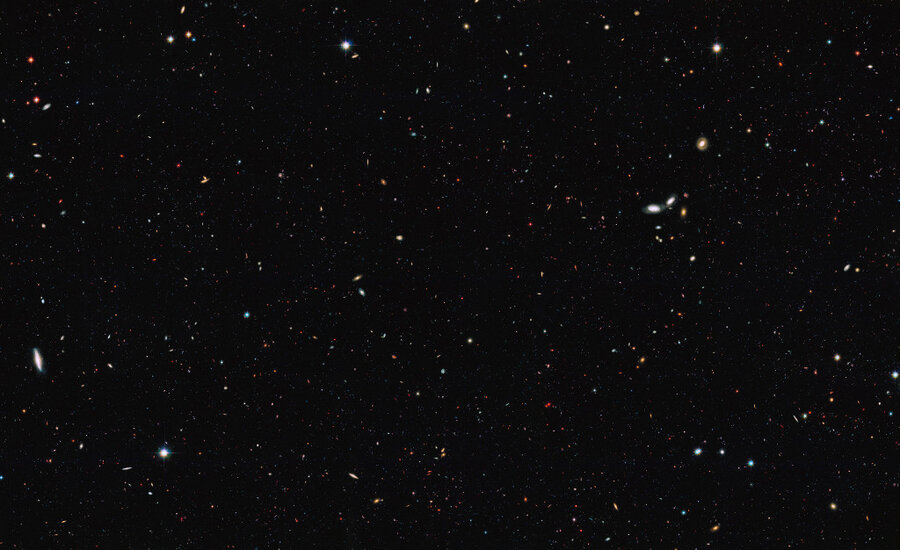Universe may hold 10 times more galaxies than we thought
Loading...
Using new mathematical models and 3-D maps to explore where no telescope has gone before, a team of international researchers has determined that there are approximately 2 trillion galaxies in the observable universe – 10 times more than previously thought. But 90 percent of those galaxies remain hidden to present-day technology.
The study published Thursday in the Astrophysical Journal was conducted by researchers at the University of Nottingham in England, University of Edinburgh in Scotland, and Leiden University in the Netherlands, and represented the culmination of 15 years of work. Using a network of telescopes across the globe, and mathematical models to count and then make a 3-D map of all the galaxies in the universe, the researchers are offering clues into the evolution of the early universe.
"We are missing the vast majority of galaxies because they are very faint and far away," Christopher Conselice, an astrophysics professor at the University of Nottingham and the lead author of the study, said in a statement. "The number of galaxies in the universe is a fundamental question in astronomy, and it boggles the mind that over 90 percent of the galaxies in the cosmos have yet to be studied. Who knows what interesting properties we will find when we study these galaxies with the next generation of telescopes?"
The researchers used the Hubble Space Telescope’s Deep Field images to count the most distant galaxies capable of being seen by a current telescope technology. To account for galaxies that are too faint or too far away to be detected by modern day telescopes, the research team created new mathematical models to calculate that there must be at least 10 times as many as the previously estimated 100 billion to 200 billion galaxies in our universe.
By measuring the number of galaxies at different instances of time, Dr. Conselice and his team gained new insights into how the universe expanded. The larger galaxies of today are actually comprised of smaller galaxies that merged as they evolved.
"This is very surprising as we know that, over the 13.7 billion years of cosmic evolution since the Big Bang, galaxies have been growing through star formation and mergers with other galaxies," Conselice said in a statement. "Finding more galaxies in the past implies that significant evolution must have occurred to reduce their number through extensive merging of systems."
While the findings raise many questions that will likely be the basis of future research, they begin to answer others, too.
The researchers report that the number of galaxies in the universe invisible to the human eye contributes to the solution of Olbers' paradox, which seeks to answer why the sky is dark at night. The findings also make it even more unlikely that we are the lone intelligent species in the universe. The Drake Equation, which attempts to calculate the number of potential alien civilizations in space, will have to be adjusted to incorporate the trillions of new galaxies, as Popular Mechanics reports.








